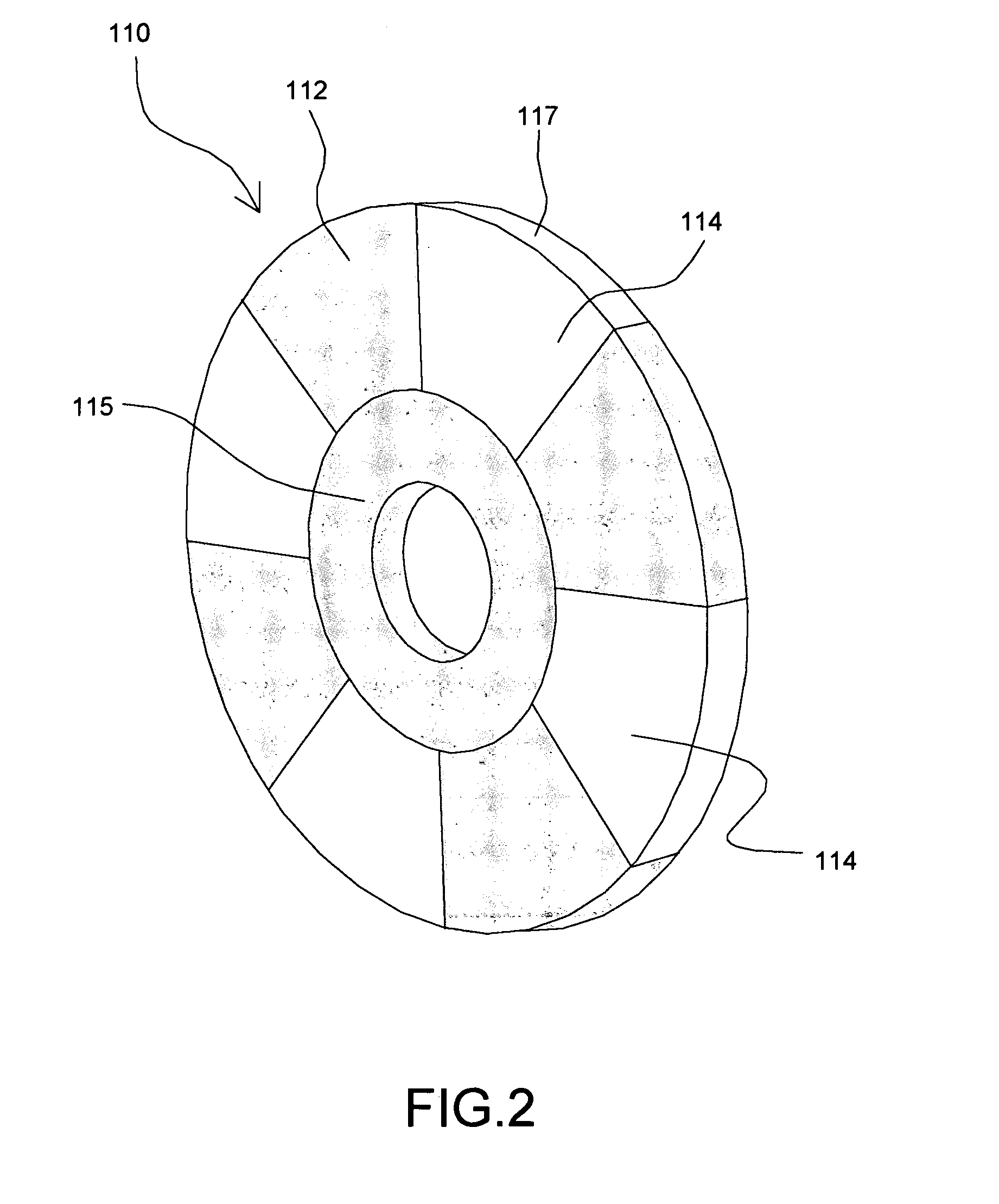Superconducting rotating machines with stationary field coils
a superconducting coil and rotating machine technology, applied in the direction of windings, magnetic circuit rotating parts, magnetic circuit shapes/forms/construction, etc., can solve the problems of increasing the complexity of the overall system design, adding the superconducting field coil to substantial thermal stresses, centrifugal stresses, etc., to achieve the effect of increasing the torque density, improving reliability, and improving performance characteristics
- Summary
- Abstract
- Description
- Claims
- Application Information
AI Technical Summary
Benefits of technology
Problems solved by technology
Method used
Image
Examples
Embodiment Construction
[0018]FIG. 1 is a cross-sectional view of an exemplary embodiment of an electrical machine 100. The machine 100 may operate as a motor and / or as a generator as desired. The machine 100 includes a stator assembly 150 having a stator yoke 152, a pair of armature coils 165 mechanically coupled to the stator yoke 152, and a stationary superconducting field coil 170. The stator yoke 152 comprises a magnetic material, and a variety of materials can be used to form the yoke 152, non-limiting examples of which include iron, magnetic steel, silicon iron, and iron-cobalt alloys. In one example, the cross bar portion 152a of the yoke is formed of a different material than are the legs 152b of the yoke. For example, in a particular embodiment cross-bar 152a comprises a solid material and legs 152b comprise laminates, in order to reduce AC field induced eddy current losses in the yoke. The machine 100 further includes a shaft 120 rotatably mounted in the stator yoke 152 and formed of a non-magne...
PUM
 Login to View More
Login to View More Abstract
Description
Claims
Application Information
 Login to View More
Login to View More - R&D
- Intellectual Property
- Life Sciences
- Materials
- Tech Scout
- Unparalleled Data Quality
- Higher Quality Content
- 60% Fewer Hallucinations
Browse by: Latest US Patents, China's latest patents, Technical Efficacy Thesaurus, Application Domain, Technology Topic, Popular Technical Reports.
© 2025 PatSnap. All rights reserved.Legal|Privacy policy|Modern Slavery Act Transparency Statement|Sitemap|About US| Contact US: help@patsnap.com



